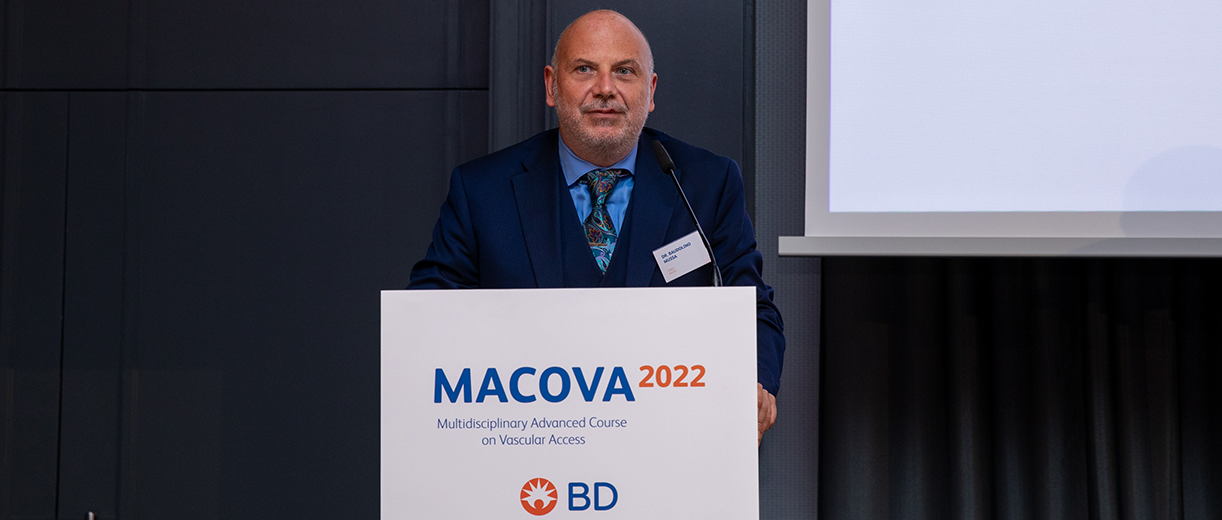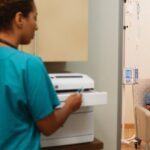Development of a vascular access team: One size does not fit all
The benefits of a vascular access team are no secret. NIVAS (The UK National Infusion and Vascular Access Society) claims that they can help reduce treatment delays, expenses, length of stay, infection and complication rates, while boosting patient experience, efficiency, quality of care and clinical outcomes.1
According to Professor Baudolino Mussa, Vascular Access Surgeon and Professor of Vascular Access at the University of Turin in Italy, vascular access needs vary country to country, even hospital to hospital, and the structure of a vascular access team should be tailor-made to each individual institution.2,3
At the 2022 BD Multidisciplinary Advanced Course on Vascular Access (MACOVA), Professor Mussa presented two regional surveys that take a closer look into the challenges, benefits and needs of vascular access teams in Europe.
Local variation in the development of vascular access teams
Based on a qualitative survey across six European countries, Professor Mussa and his colleagues found that the structures and functions of existing vascular access teams varied greatly.3 For example, not all respondents agreed that a vascular access team is a nursing-led programme, with some nurses only involved on a part-time basis.3
A second survey across the same six countries found more interesting variation. Certain countries were more advanced in the development of vascular access teams than others, and the implementation of a vascular access team depended greatly on the size and type of the institution.4
“It is impossible to create a classic scheme that can be applied to every country,” said Professor Mussa. This is why, he insisted, every country must design a vascular access team that fits their needs.2
Learn more about the survey: The state of vascular access teams: Results of a European survey
Become a VAMbassador to get access to the full article
References
- National Infusion and Vascular Access Society (NIVAS). The Benefits of a Nursing Led Vascular Access Service Team. Published June 2022. Accessed July 12, 2022 at: https://nivas.org.uk/contentimages/main/NIVAS-White-paper-for-standardisation-of-vascular-access-teams-within-the-NHS_FINAL-27.06.22.pdf
- Mussa F. Perspectives on VAT from a European Panel. Lecture presented at: The 2022 BD Multidisciplinary Advanced Course on Vascular Access (MACOVA); 9 June 2022; Berlin, Germany.
- Mussa B, Pinelli F, Rey NC et al. Qualitative interviews and supporting evidence to identify the positive impacts of multidisciplinary vascular access teams. Hosp Pract (1995). 2021 Aug;49(3):141-150. Doi: 10.1080/21548331.2021.1909897. Epub 2021 Jun 9.
- Cortés Rey N, Pinelli F, van Loon FHJ, et.al The state of vascular access teams: Results of a European survey. Int J Clin Pract. 2021 Sep 13:e14849. doi: 10.1111/ijcp.14849.
The presentation is made on behalf of BD and contains the opinions, techniques and practices by Professor Baudolino Mussa. The opinions and techniques presented herein are for informational purpose only.
This list of references to third-party peer-reviewed material and the sites they are hosted on are provided for your reference and convenience only, and do not imply any review or endorsement of the material or any association with their operators. The Third-Party References (and the Web sites to which they link) may contain information that is inaccurate, incomplete, or outdated. Your access and use of the Third Party Sites (and any Web sites to which they link) is solely at your own risk.
BD-83728




